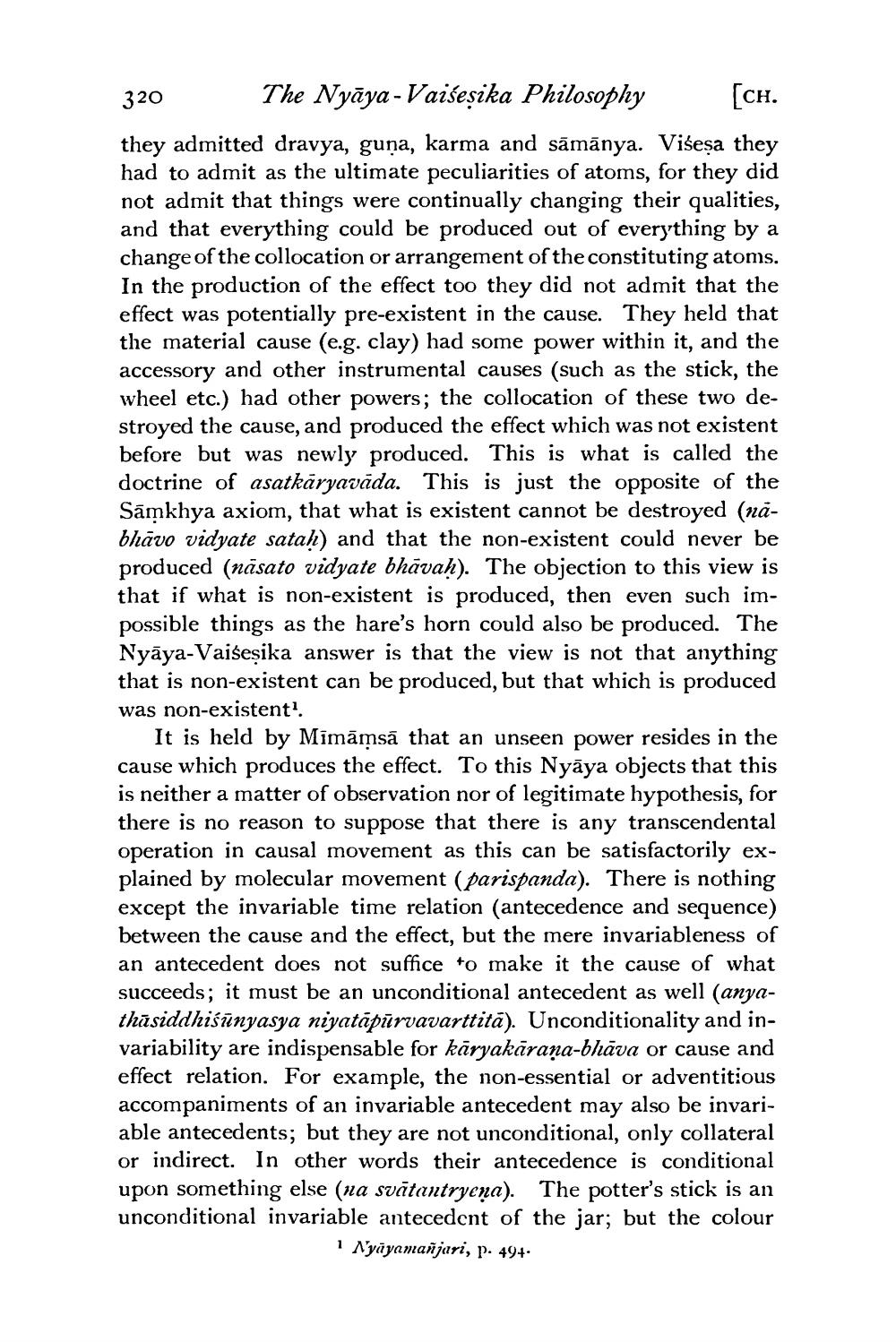________________
320 The Nyāya -Vaiseșika Philosophy [CH. they admitted dravya, guna, karma and sāmānya. Višesa they had to admit as the ultimate peculiarities of atoms, for they did not admit that things were continually changing their qualities, and that everything could be produced out of everything by a change of the collocation or arrangement of the constituting atoms. In the production of the effect too they did not admit that the effect was potentially pre-existent in the cause. They held that the material cause (e.g. clay) had some power within it, and the accessory and other instrumental causes (such as the stick, the wheel etc.) had other powers; the collocation of these two destroyed the cause, and produced the effect which was not existent before but was newly produced. This is what is called the doctrine of asatkāryavāda. This is just the opposite of the Sāmkhya axiom, that what is existent cannot be destroyed (nabhāvo vidyate satah) and that the non-existent could never be produced (näsato vidyate bhāvaḥ). The objection to this view is that if what is non-existent is produced, then even such impossible things as the hare's horn could also be produced. The Nyāya-Vaiseșika answer is that the view is not that anything that is non-existent can be produced, but that which is produced was non-existent!.
It is held by Mimāmsā that an unseen power resides in the cause which produces the effect. To this Nyāya objects that this is neither a matter of observation nor of legitimate hypothesis, for there is no reason to suppose that there is any transcendental operation in causal movement as this can be satisfactorily explained by molecular movement (parispanda). There is nothing except the invariable time relation (antecedence and sequence) between the cause and the effect, but the mere invariableness of an antecedent does not suffice to make it the cause of what succeeds; it must be an unconditional antecedent as well (anyathāsiddhiśünyasya niyatāpūrvavarttitā). Unconditionality and invariability are indispensable for kāryakārana-bhāva or cause and effect relation. For example, the non-essential or adventitious accompaniments of an invariable antecedent may also be invariable antecedents; but they are not unconditional, only collateral or indirect. In other words their antecedence is conditional upon something else (na svātantryeņa). The potter's stick is an unconditional invariable antecedent of the jar; but the colour
i Nyāyamañjari, p. 49+.




